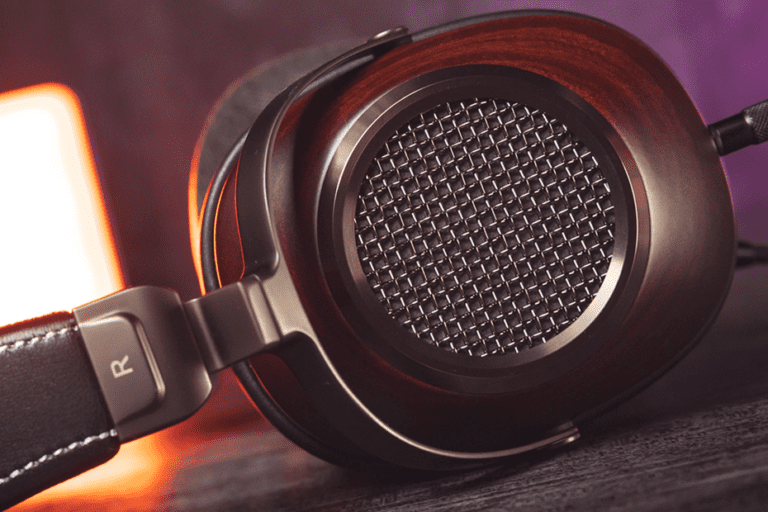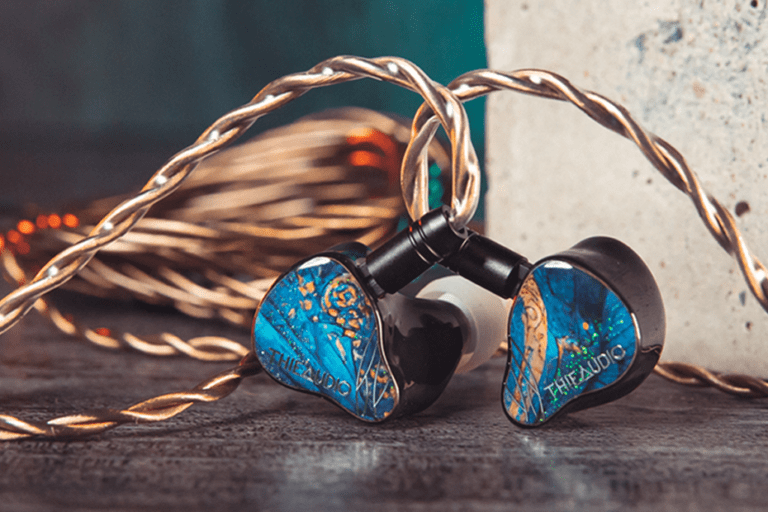Recently, I had the opportunity to test the HIFIMAN Sundara Closed-Back headphones. And in this review, I will share my thoughts and opinions on this product.
Disclaimer: I am not paid to make this review or offer any specific opinions about this product. All thoughts expressed in this review are solely my own.
The HIFIMAN Sundara Closed-Back headphones are a new addition to the Sundara lineup. It features planar magnetic drivers with HIFIMAN’s NEO supernano diaphragm and stealth magnets technology. It also has a beech wood ear cups, and a detachable cable. The original Sundara boasts an impressive frequency response range and a relatively balanced sound signature. While the Closed-Back version introduces the Stealth Magnet design and different drivers. In this review, we will explore how the Closed-Back version compares to the open-back Sundara.
Design & build
HIFIMAN Sundara closed-back is built as good as the original Sundara and the build is mostly metal. Closed-back Sundara features the same headband as the original Sundara. Which in its place borrowed its design ideas from two of HIFIMAN’s previous headphone designs.
The outer part of the headband is made from steel spring. It has a black finish and a cut in the middle. The inner part of the headband is a suspension band made from pleather. It is mounted on the plastic inserts of the headband. The plastic inserts have HIFIMAN logo on both sides. There is also a Hifiman brand name on the left side and Sundara on the right side.
The headband is ergonomic and comfortable and it’s really good at distributing the weight of the headphones. The clamping force of the headband is slightly above average. But paired with more massive ear cups it can be clampy if you have a large head.
The overall depth of the ear cups of the original Sundara is 42mm. The overall depth of the closed-back version is 60mm. The yokes that attach the headband to the cups are metal too. They are made from a single piece of metal, which makes it quite durable. To adjust the headband, you simply move each ear cup up or down. The headband size adjusting mechanism works well.
The ear cups are the standout feature of the HIFIMAN Sundara Closed-Back. They are made from beautiful beechwood and polished to perfection. While they lack significant horizontal rotation, they surprisingly offer 360-degree vertical rotation, enhancing comfort and customization options. The hybrid ear pads, featuring protein leather on the outer and inner sides. The part that is in contact with the head is made ouf of cloth. And it provides a soft and pleasant experience for prolonged listening sessions.
Fit & comfort
Despite the fact the headphones weigh 432 grams without cable they are still comfortable. I have an average size head, and the headphones fit me well. In addition I liked how the headband distributes the weight of the headphones. But if you have a really big head, the size and shape of the headband might be a problem
The headband clamping force is slightly above average. But in my case it provided a good fit and I didn’t experience any discomfort even during long listening sessions. The hybrid ear pads are breathable and comfortable. I have large ears and still they almost completely fit inside the ear pads.
Cable
The HIFIMAN Sundara Closed-back come with one detachable cable which is 1.5 meters long. It has an angled 3.5 mm TRS connector on one. There are two 3.5 mm TRS connectors on the other ends.
The connectors have an L and R marking, which for some reasons are very hard to read as HIFIMAN decided to use a black font on a black connector. Compared to the cable of the original Sundara, this cable is much more flexible and soft. And the cable has minimal microphonics which is also good. But I still prefer the 3.5mm connector of the original Sundara cable.
By the way both ear cup connectors are located slightly forward to the front of the earcups. When the cable is connected, is draps across the user’s chest for better comfort. In addition if you are not happy with the stock cable, you can purchase an aftermarket replacement. It is really easy to find as HIFIMAN is using standard connectors.
HIFIMAN Sundara closed back sound overview
Moving on to the sound quality of the Sundara Closed-Back headphones, it’s essential to understand that all sound impressions are subjective and should be taken with a grain of salt.
With an impedance of 20 Ohms and a sensitivity of 98 dB, the Closed-Back version requires some amplification, although it can still function adequately with portable sources. Compared to the neutral and slightly warm tuning of the original Sundara, the Closed-Back version offers a different tonality and tuning.
The bass is well-extended, quite linear, tight, fast with just a small amount of sub bass roll off. It’s got a nice amount of impact, but don’t expect too much sub-bass rumble from this pair, even though it has a closed-back design. The subbass region is transparent and detailed, though its texture is different compared to the bass on the original Sundara as well as the bass on original Sundara is more transparent. Bass on closed-back version has a good control, solid body and a minimal bleed into mids.
Compared to the original Sundara, there is slightly more weight here, but the bass on original Sundara is in my opinion more clear and this is especially true for the pieces of music that have a lot of stuff happening in a lower register.
Found this review useful? Read more headphone reviews here
The midrange on closed-back Sundara is probably one of the highlights of this pair. It’s relaxed, lush, airy and offers a good level of details. Lower mids are not as linear as they are on original Sundara, while the 1 Khz to 3 Khz range is quite opposite to what we had on original Sundara. The mids on original Sundara are linear up to 1 Khz followed by a relatively small recession until around 3kHz. On the closed back version there is a rise starting around 600 Hz that peaks at around 2 Khz and then slowly merges into the lower treble region. Because of this, lower mids sound more full, compared to the upper mids and in addition they have more energy and definition
Upper mid-range sounds closer to the original Sundara, it’s fairly soft and transparent with a good level of extension and detail retrieval. Though upper mids on the original Sundara are more resolving and detailed. Overall, the midrange here is pleasant, lush and musical, but at the same time it also can be a deal breaker for those who fell in love with the midrange of the original Sundara.
The treble on the closed-back Sundara is relatively smooth, and it shows slightly energetic and bright tonality, but it’s not as refined as treble on the original Sundara. And this fact is further distancing Sundara closed-back from its older sibling. The treble has a good level of extension and details, but I noticed that with some recordings it has quite an artificial and metallic timbre. Still I wouldn’t call it sibilant, sharp or grainy, but with busy musical passages the overall treble presentation feels a bit unnatural and some instruments are slightly moved further away in the background.
Sound stage, imaging and details
HIFIMAN Sundara closed-back has an average sound stage size, it’s still more wide than deep. Compared to the original Sundara, the sizing is more or less equal, and I didn’t notice a huge difference in this department.
On the other hand most sounds seem to hold their particular positions in space, even during busy passages, which is good. Imaging on closed-back version is good, and driver matching in my case was good too with no channel imbalance The separation of instruments, while not class leading, is still better than some closed-back headphones in this price range
As for detail and micro-detail retrieval, I think they both are average and the closed-back version is well behind the original HIFIMAN Sundara in this regard.
Conclusions
In conclusion, the HIFIMAN Sundara Closed-Back headphones are a unique and intriguing addition to the Sundara lineup. While they share some similarities with the original Sundara in terms of build quality and design, their sound signature is distinctly different. The bass is punchy and well-controlled, the midrange is lush and relaxed, and the treble is smooth but not as refined as the original version. With its relatively affordable price tag and closed-back design, the Sundara Closed-Back is an excellent option for those seeking a planar magnetic headphone with a balanced sound signature.
Pros:
- Solid build quality and design
- Beautiful beech wood ear cups
- Comfortable fit for most users
- Punchy and well-controlled bass
- Lush and relaxed midrange
- Easy to drive, suitable for various use cases
Cons:
- Treble may sound artificial with certain recordings
- Not the typical HIFIMAN tuning, which could disappoint some fans of the original Sundara
- Stock cable could be improved based on community feedback
In summary, the HIFIMAN Sundara Closed-Back headphones are worth considering if you are in the market for a planar magnetic closed-back headphones. Despite its departure from the traditional HIFIMAN sound, the Closed-Back version delivers a pleasant and enjoyable listening experience, especially at its current price point.
I hope this review has been helpful and if you’d like to see more content like this, consider subscribing to my YouTube channel for future updates. Thank you for reading, and happy listening!
** As an Amazon Associate I earn from qualifying purchases. Some of the links in my reviews are affiliate links, which means at no extra cost to you, I will make a small commission if you click them and make a qualifying purchase.


